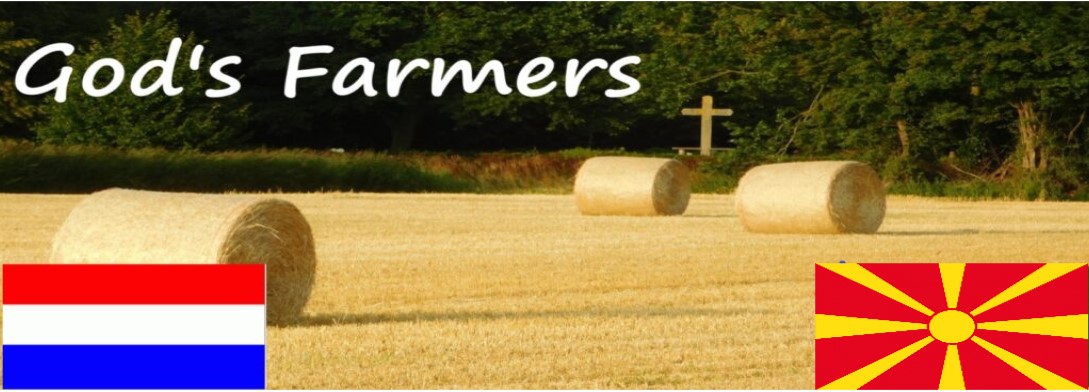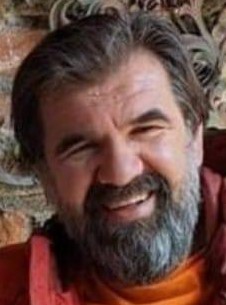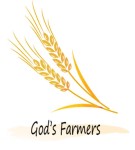

Zoran Spasovski
Why Macedonia?
We have known Zoran Spasovski for quite a few years and met him again in the fall of 2023 at a conference in Ermelo.
Zoran was very interested in our work among the Roma in Bulgaria. He invited us to come and speak in Roma congregations in his country.
Since 2010, Zoran has been a pastor at the Christian Center Macedonia, an evangelical Christian community. He is pastor of five evangelical congregations. The mother congregation is in Skopje. There are also churches in Shutka, Veles, Strumica, Banica and there are a few cell groups in smaller towns.
In addition, Zoran is a traveling evangelist and travels to countless countries to bring his message in a penetrating way. Zoran is married to the Swedish Rebecka who travels with him. They live with their family in Skopje, the capital of Macedonia.
Background information Roma in Macedonia
The Roma in North Macedonia are ethnic Roma living in North Macedonia. The most recent census in 2002 recorded 53,879 Roma in the country, or 2.66% of the Macedonian population.
Religion across Macedonia: Macedonian Orthodox 64.8%, Islamic 33.3%, other Christian 0.7%, other 1.2%
The Roma flourish in the capital Skopje
But for the rest, most Macedonians never come to the Gypsy quarter (the largest Roma ghetto in the world) and most Gypsies never come to the rest of Skopje. The prices are so low in part because market vendors don’t pay taxes. Shutka depends on funds from the national budget of the central government. The municipality itself cannot levy taxes, much to the frustration of Mayor Dudus’. The growing population is forcing us to invest more in infrastructure – sewerage, water supply, electricity and also schools – but we don’t have the money for that right now.’ He hopes that now that the new census data confirms that his municipality has grown exponentially, more tax money will be made available for his municipality. This environment is a world of difference for Roma people. They are not confronted with rejection and humiliation on a daily basis, but can lead a normal and dignified existence. The city council has taken care of good utilities, paving, beautifully landscaped parks, modern schools, playground, etc. Instead of dilapidated huts, most Roma families live in ordinary stone houses, increasingly with a floor on top.Everywhere people are working at expansion and new construction. You can also see the ‘palaces’ as they are also found in Romania, for example. These large structures seem more luxurious than they are; they are actually blocks of flats where several generations and families from a Roma family usually live together.
The municipality in Shuto Orizari also stimulates education and many Roma youngsters go on to further education after primary school. Some even went on to study at university. In recent decades, more than a hundred Roma from Shutka have already obtained an academic degree!
A whole different world for the Roma outside the capital Skopje
Shutka has become a district that is not inferior to other districts. But this is in stark contrast to other areas – in North Macedonia and elsewhere – where Roma are a minority and where they suffer severely from discrimination and exclusion. Like in the village of Saraj, about 10 kilometers east of Skopje. The vast majority of Roma cannot find permanent work there. Families have hardly any income and are struggling to survive. v
Background information Macedonia
The Republic of North Macedonia is an internal state bordered by Kosovo to the northwest, Serbia to the northeast, Bulgaria to the east, Greece to the south, and Albania to the west. It makes up about one-third of the larger historical area of Macedonia. The capital and largest city is Skopje with 795,000 (2020) inhabitants.
North Macedonia has approximately 1,832,696 inhabitants and an area of 25,713 km2 (for comparison: the Netherlands is 41,543 km2 in size and has 17,280,397 inhabitants).
BRON 1 BRON 2Waarom Macedonië?
We kennen Zoran Spasovski al aardig wat jaren en hebben hem in najaar 2023 opnieuw ontmoet tijdens een conferentie in Ermelo.
Zoran was erg geïnteresseerd in ons werk onder de Roma in Bulgarije. Hij nodigde ons uit om te komen spreken in Roma-gemeentes in zijn land.
Daarnaast is Zoran reizend evangelist en komt in talloze landen om zijn boodschap op indringende wijze te brengen. Zoran is getrouwd met de Zweedse Rebecka die met hem meereist. Met hun gezin wonen zij in Skopje, de hoofdstad van Macedonië.
Achtergrondinformatie Roma in Macedonië
De Roma in Noord-Macedonië zijn in Noord-Macedonië wonende etnische Roma. De meest recente volkstelling van 2002 registreerde 53.879 Roma in het land, oftewel 2,66% van de Macedonische bevolking.
Religie in heel Macedonië: Macedonisch-orthodox 64,8%, islamitisch 33,3%, overig christelijk 0,7%, overige 1,2%
De Roma floreren in hoofdstad Skopje
Maar voor de rest komen de meeste Macedoniërs nooit in de zigeunerwijk (de grootste Roma getto ter wereld) en de meeste zigeuners komen nooit in de rest van Skopje. De prijzen zijn deels zo laag omdat marktkooplieden geen belasting betalen. Shutka is afhankelijk van middelen uit de nationale begroting van de centrale overheid. De gemeente kan zelf geen belasting heffen, tot grote frustratie van burgemeester Dudus. ‘De groeiende bevolking dwingt ons om meer te investeren in infrastructuur – riolering, watervoorziening, elektriciteit en ook scholen – maar daar hebben we nu het geld niet voor.’ Hij hoopt dat nu de nieuwe censusdata bevestigen dat zijn gemeente exponentieel is gegroeid er meer belastinggeld voor zijn gemeente beschikbaar komt.Deze omgeving is een wereld van verschil voor Roma-mensen. Zij worden hier niet dagelijks geconfronteerd met afwijzing en vernederingen, maar kunnen er een normaal en menswaardig bestaan leiden. Het gemeentebestuur heeft zorg gedragen voor goede nutsvoorzieningen, bestrating, mooi aangelegde parkjes, moderne scholen, speeltuin, etc. In plaats van bouwvallige hutten bewonen de meeste Roma-gezinnen gewone stenen huizen, steeds vaker ook met een verdieping erop.
Overal wordt hard gewerkt aan uitbreiding en nieuwbouw. Je ziet hier eveneens de ‘paleizen’ zoals ze ook in bijvoorbeeld Roemenië voorkomen. Deze grote bouwwerken lijken luxer dan ze zijn; het zijn eigenlijk flatgebouwen waar doorgaans meerdere generaties en gezinnen uit een Roma-familie bij elkaar wonen.
De gemeente in Shuto Orizari stimuleert ook het onderwijs en veel Roma-jongeren volgen er na de basisschool een vervolgopleiding. Sommigen daarna zelfs een universitaire studie. De afgelopen decennia hebben al meer dan honderd Roma uit Shutka een academische graad behaald!
Een hele andere wereld voor de Roma buiten hoofdstad Skopje
Shutka is een stadsdeel geworden dat niet onderdoet voor andere wijken. Maar dat wel in groot contrast staat met andere gebieden – in Noord-Macedonië en elders – waar de Roma een minderheid vormen en waar zij zwaar te lijden hebben onder discriminatie en buitensluiting. Zoals in het dorpje Saraj, zo’n 10 kilometer ten oosten van Skopje. Het overgrote deel van de Roma kan er geen vast werk vinden. Gezinnen hebben nauwelijks inkomen en worstelen om te overleven. Kinderen zijn er verpauperd en hun toekomst lijkt hopeloos.
Achtergrondinformatie Macedonië
De Republiek Noord-Macedonië is een binnenstaat die wordt begrensd door Kosovo in het noordwesten, Servië in het noordoosten, Bulgarije in het oosten, Griekenland in het zuiden en Albanië in het westen. Het vormt ongeveer een derde van het grotere historische gebied Macedonië. De hoofdstad en grootste stad is Skopje met 795.000 (2020) inwoners.
Noord-Macedonië heeft ongeveer 1.832.696 inwoners en een oppervlakte van 25.713 km2 (ter vergelijking: Nederland is 41.543 km2 groot en heeft 17.280,397 inwoners).
BRON 1 BRON 2Our series of short studies are a preparation for these trainings. They are published via our YouTube channel GodsFarmers.
Please pray for us, our volunteers and the organization in Macedonia. If you want to help, please get in contact with us.
